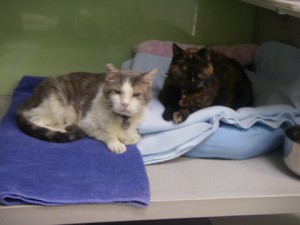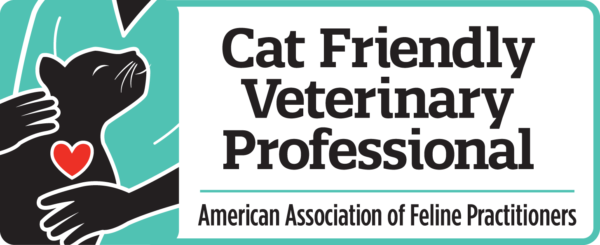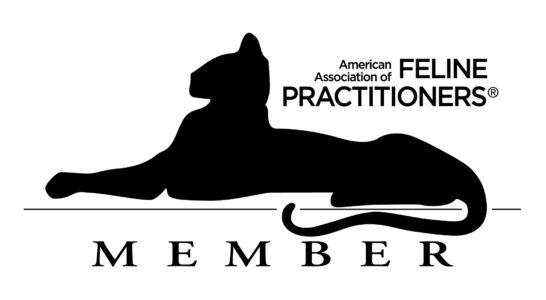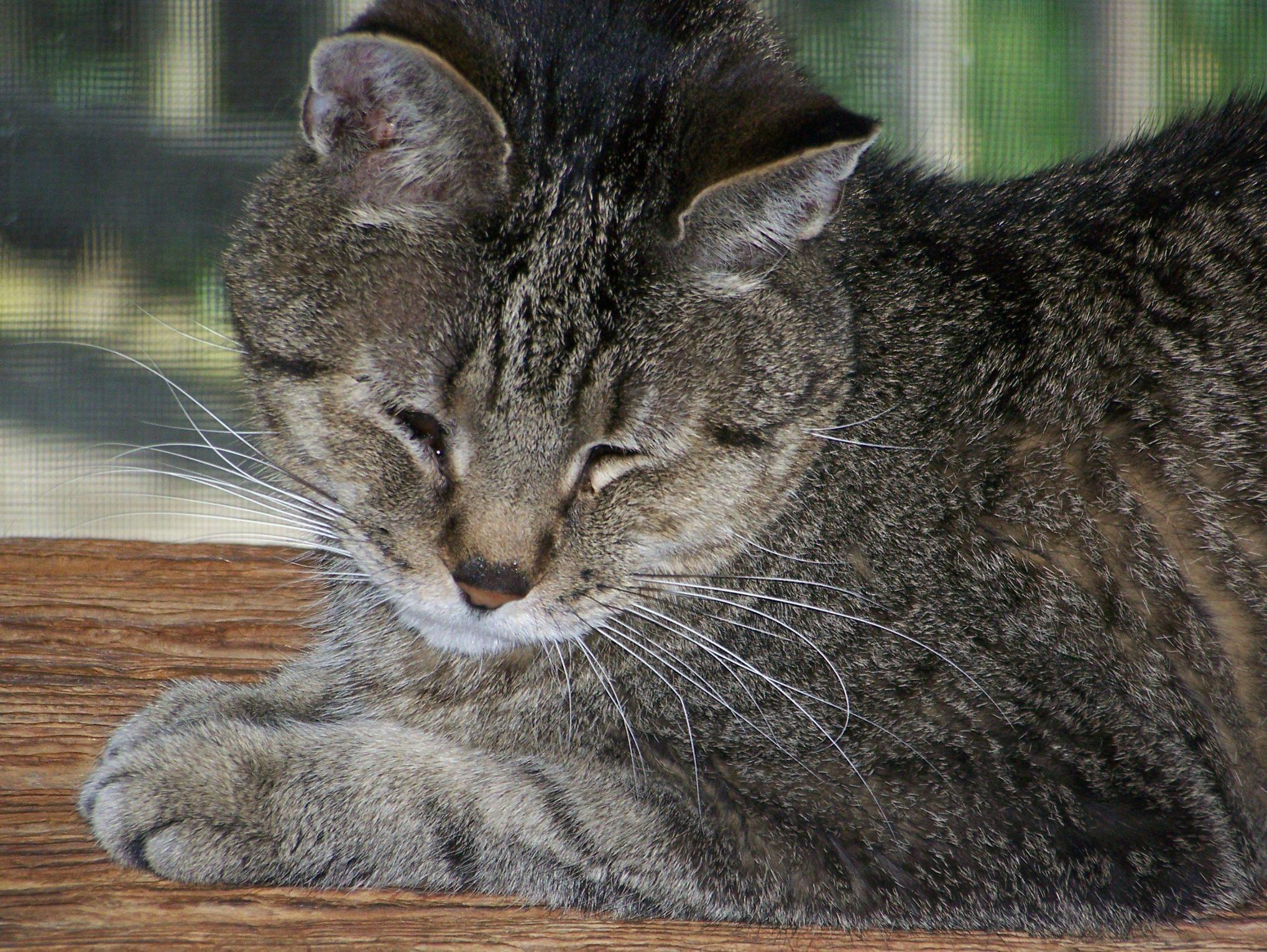
Osteoarthritis is defined as inflammation of the joint lining and deterioration of the cartilage. Arthritis is a painful condition that should always be taken seriously. Almost all senior cats have some degree of arthritic changes. In fact, studies have shown that cats start developing microscopic arthritic changes around 10-12 years of age. Treatment for arthritis is most effective if started early before obvious signs of the condition occur.
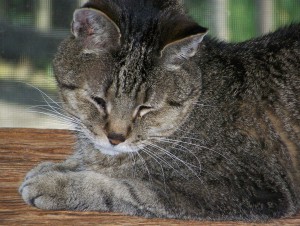 How will you know if your cat is arthritic? Well, take into account a few obvious precursors:
How will you know if your cat is arthritic? Well, take into account a few obvious precursors:
- Is your cat overweight?
- Is your cat over 10 years of age?
- Is your cat handicapped in anyway (i.e. a tripod)?
- Is your cat de-clawed?
If you answered yes to any of these questions then starting treatment earlier rather than later would be to your cats benefit. Just like people if your cat has suffered an injury, is handicapable, or has been overweight most of their life then they are more likely to suffer joint pain sooner. Rainy days and cold weather cause flare ups in arthritic symptoms in animals just like in people. It is important to ask your veterinarian what type of supportive care they would recommend.
There are other signs that your cat may be suffering from arthritis. For example, have you suddenly noticed they haven’t jumped up onto the counter top in a while? Do not be fooled! Your cat may still get on the counter, but remember cats are the masters of disguise and excellent at masking any symptoms of illness. They may simply be taking the path of least resistance to access the counter. When was the last time you saw them jump directly from the floor to the countertop without using a chair, stool, table etc. to aid them?
Other signs include:
Difficulty climbing the stairs or jumping onto the bed or sofa: if your kitty used to fly up the stairs and launch onto the bed and no longer does so that could be an early sign. It is not that they are just “getting old”, there are physical changes slowing these behaviors as well.
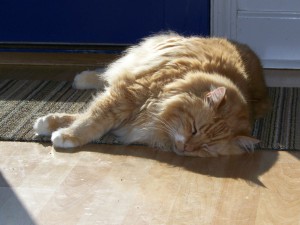 Heat seeking behavior such as lying on heat vents and sunny locations: providing warmth is actually a great recommended treatment for arthritis support so provide access to sunny spots; heating pads, snuggle safes, thermal heated cat cushions, and the like.
Heat seeking behavior such as lying on heat vents and sunny locations: providing warmth is actually a great recommended treatment for arthritis support so provide access to sunny spots; heating pads, snuggle safes, thermal heated cat cushions, and the like.
Inappropriate elimination: think about how difficult and tiring it can be to walk on the beach. Posturing in cat litter every time your cat has to go to the bathroom can be extremely difficult when their hips, knees, and elbows don’t work like they used to. Sometimes we have to provide less litter depth or a puppy pad for arthritic cats to help set them up to succeed in their litter box. Having more targets available is also helpful. More litter boxes ensures they always have a clean place to go. If they have a hard time navigating in the box they could accidentally step on a soiled area creating litter box avoidance; since cats are fastidiously clean animals and do not want to become soiled in the process of eliminating. After all, the carpet is always clean and is a nice stable surface that doesn’t move out from under their feet!
Changes in grooming habits: cats get matted along their hips, back, and hind quarters when they are too arthritic to groom. If they are too obese to reach these areas and arthritic on top of that, now we have two challenges to overcome. Arthritic senior cats need regular combing and brushing to maintain their coats and if they are not on anything to help with their discomfort the grooming process can be a painful one. If your cat is extremely matted you may need the help of a professional groomer to gain a fresh start. Your groomer should be able to teach you what tools to use to continue to maintain your cat’s coat, but you still may need professional help from time to time. Shaving your cat into a lioncut can be very helpful and more comfortable for them then combing in their senior years.
Aggression: some arthritic cats are so very painful that they are quite irritable and exhibit pain induced aggression or petting intolerance. These kitties really need some help. They may also have matted hair coats compounding the pain as matted hair alone can be uncomfortable to the skin and sensation of touch. If beneath that their joints also hurt, you may have a very irritable kitty on your hands.
As you can see, arthritis can result in some significant changes in behavior and daily routine for your cat. So what do you do? Ask your veterinarian! There are a wide variety of products on the market now. There are glucosamine and chondroitin products for cats, these come in the form of treats or capsules depending on how agreeable your cat is to being medicated. There are also prescription mobility diets specifically formulated to be high in Omega 3 fatty acids, this is a very easy way to provide your senior cat with some arthritis relief! Antioxidants and Omega 3’s are also great supplements for senior cats for many reasons more than just joint support. Lastly, if your kitty is severely affected pain control may be prescribed and there are a few different forms your veterinarian may recommend depending on the degree of discomfort your cat is experiencing.
Remember that with a cat any change of behavior can be a sign of a possible medical condition. Arthritis support in cats is often grossly over-looked as their symptoms are more subtle. They are not dogs. We don’t take them for a walk or a run each day and then notice they are falling behind or limping. Again, because they are a species that is both predator and prey, they mask their symptoms and will not tell you they hurt. It is up to us to listen and observe early warning signs!
“Senior moments” provide plenty of soft cushy bedding as well!